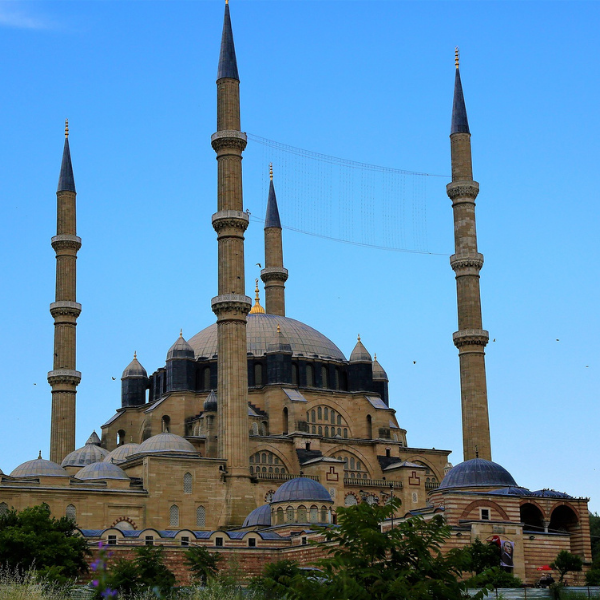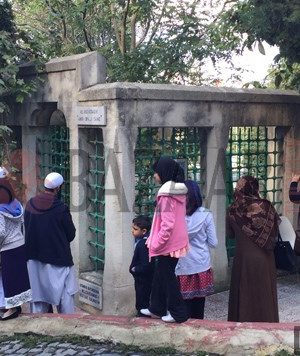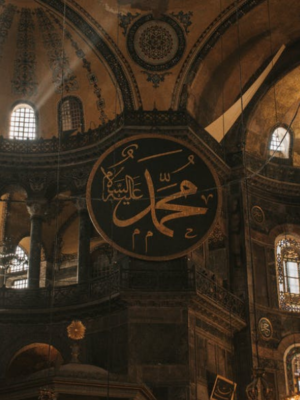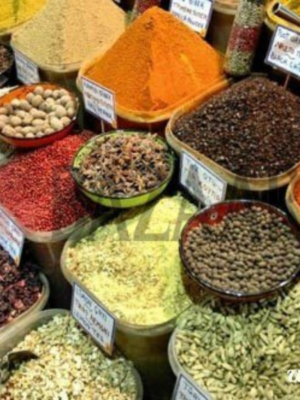Description

A Day in Mystic City – Edirne
Les Arts Turcs Tours are offering you a nice full day visit in European and Asian Part of Istanbul including a Bosphorus Cruise on the boat. We organise the tours as private or in small number of groups upon the date & requests.
We have flexibility in our tours.
Here you can see the itinerary.
08.30 start from your hotel and we turn back around 19.00 to your hotel.
Eski Camii, was built of cut stone and brick 1402-14 with fine white marble portal and decorative calligraphy on the interior walls and pillars.
Üç Serefeli Camii, the name of the mosque derived from the three balconies on the southeast minaret. Each balcony is reached by a separate stairway. The decorative tile designs on the minarets are all different. The minarets were the most important development in the structure of the mosque in the fifteenth century.
Selimiye Mosque Edirne’s crowning glory, was built for Selim II, (1566-74) by Sinan who was the architect of the Abode of Felicity for 50 years. It was the masterpiece of Sinan’s old age. The symmetrical design strongly emphasised by the four minarets and the soaring rise of the central dome.
Lunch
Semiz Ali Pasa Arasta is also the work of Sinan. Completed in 1589, it is a long tunnel-like building with shops on both sides. Here you may buy one of Edirne’s specialities, soap shaped like fruit or vegetables.
Meric bridge (New Bridge) constructed at the junction of Meriç and Arda rivers between 1842 – 1847.
Kule Kapisi (12 C Tower Gate) is all that remains of the tower which once protected the principal gate of the citadel. It was rebuilt by the Byzantine emperor John Comnenus II (1118-43) as part of his repair of the Hadrianic defensive system.
Beyazit Kulliyesi is the largest in Edirne, the complex had a mosque and an hospital which was famous for the skill of its surgeons. In the octogonal, domed timarhane the insane were treated by musical therapy.
Tour Includes.
This is a group tour runs all year long.
Pick up and Drop off service.
Transportation in private minivan.
Professional English speaking guide and experienced driver.
Entrance fees mentioned by the itinerary.
Services charges and local taxes.
Bazaar Turkey – Les Arts Turcs Art Studio
Alemdar Mh. Incili Cavus St.
No: 19 Floor : 3 (Behind The Underground Cistern)
Sultanahmet 34110
Istanbul, Turkey
Contact : Mr. Alp or Mr. Nurdogan ( Phone : +90 544 220 10 22 )
E-mail : info@bazaarturkey.com
Google Maps : https://goo.gl/maps/uXuyRmELZsx
History Of Edirne
Edirne, located on the E5 highway not far from the Kapıkule border which connects Europe and Turkey, was once a capital of the Ottoman Empire, and in the 1800’s, one of the seven largest cities of Europe. Today, this historic, graceful city welcomes visitors as they make their way to İstanbul and other points east. The city is situated on a verdant plain of poplar trees nar the junction of the Tunca and Meriç Rivers, in a well forested area. The people of the Edirne area trace their origins to Odrysens – Odrysen rule which was followed by the Macedonians and then the Roman emperor, Hadrian, who rebuilt the city and renamed it Hadrianapolis, when to the Byzantines and, in 1361, Sultan Murat I added it to the Ottoman Empire.
The three capitals of the Ottoman Empire were Bursa, Edirne and then İstanbul, which accounts for the large number of historically and acrhitecturally important works to be found in Edirne. With its mosques, religious complexes, bridges, old bazaars, caravanserais, and palaces, Edirne is a living museum.
SELİMİYE MOSQUE
The focal point of the city, occupying the top of a hill, was crated by the architect Sinan, and reflects the classical Ottoman style. Built on the orders of Sultan Selim II. between 1569-1575, it is the result of the technological abilities of the day and the skill of Sinan combined into one creative work. The dome, 31,5 meters in diameter, is the center of the mosque which raidates from this point. Looking up at the ceiling paintings, you’ll be looking at ones kings of long ago looked at, still lively in color and detail. One glance at the fine carving on the “minber” (pulpit) made of marble, tells you this is a work of skilled artists. The 16th century tiles are particularly attractive, especially those around the prayer niche ; and the apple tree tiles around the loge are a design unique to this mosque. A marble ablutions fountain stands in the courtyard facing the entrance portico of the mosque. This composition succesfully contrives, through the impact of its splendour, to prepare the emotions of those about to enter the mosque to pray. The mosque has four slender minarets, one at each corner, and each with three galleries. The large unencumbered space and its height combine to create a wonderful sensation of light spaciousness. Undoubtedly, the Selimiye Mosque is an outstanding work of art.
The Arasta, under the terraces, was built by the architect Davut Ağa, in the time of Sultan Murat III.
THE ARCHITECT SINAN: The world famous Turkish architect Sinan the “Great”, who lived between the years of 1490-1588 , was born in the village of “Ağırnas” of the city of Kayseri. He attended many wars of the Empire as a janissary going to east and west, which enabled him to see and study a lot of works of art in their place and thus as a result of his success, was approved head architect at the age of fifty. All through his life and career, he has built 81 mosques, 51 little mosques, 35 Turkish baths, 33 palaces, 18 craven-serais, 17 tombs, 8 waterarcs, 8 big bridges, 6 dungeons, 2 hospitals, 17 free food distributins buildings (imaret), ins hort 500 works of art.
The architect Sinan, built several of the famous Turkish baths in Edirne, including the Sokollu, Tahtakale, Mezitbey, Beylerbeyi and Gazimihal Hamams. His work is also seen in the Rustempasa caravanserai of 1561. it consist of to major sections and is, today, used as a hotel.
The Alipaşa Çarşı work of Sinan (1569), is still used as a bazaar. Many lovely bridges grace the Tunca and Meric rivers. These bridges are reminders of Ottoman achievements. Some of them are Yalnızgöz bridge and Saray bridge. These two bridges are works of architect Sinan.
BAYEZIT COMPLEX:
Sultan Bayezit II. had the architect, Hayreddin, build this complex towards the end of 15th century. The mosque is cubic in shape, with a deeply intended dome, while over 100 more domes cover the rest of the area. The complex includes a mosque, Darussifa (hospital), Medrese (university), kitchen and depots. Among these the most important is Darussifa, famous in its time as a modern hospital, with a unique architectural design, which was used to heal mentally diseased people by using the method of musical healing. A painting cannot portray the beauty of the reflection of the complex on the still waters of the Tunca river, as it glides quietly by.
ESKİ MOSQUE
Built between 1403-1414 by Celebi Sultan Mehmet this is the Ottoman structure in Edirne. The building is of cut stone and brick; the portal is of white marble; and the room of the entry way, the pulpit, and the interior are all covered with decorative calligraphy.
UÇ SEREFELİ MOSQUE
Built between 1438-1447 by Murat II, this mosque, presages the great period of Ottoman mosque architecture under Sinan, and represents for its times a new freedom from restraint and advances in engineering. The north-west minaret has three galleries and was the highest when built, and has only been eclipsed by those of the Selimiye Mosque.
MURADİYE MOSQUE
This mosque occupies a hill in the Sarayiçi district of the area called Muradiye Mahallesi and was built in 1434. In the contrast to the plain exterior, the interior is decorated with some of the best Ottoman tilework of the 15th century. The prayer niche is second only to the one in the Yesil mosque of Bursa.
MUSEUMS
The archeological and ethnographical museum traces the history of the area from prehistoric to Roman and Byzantine times, and there are also exhibits of men’s and women’s clothing from late Ottoman times. At the Turkish Islamic Art Museum, there are examples of Ottoman architecture, writing, hand-written texts, korans, weapons, glass-work, and an imperial tent used on campaigns.
Edirne is very important center of civilian architecture. The private Köşks and Mansions which were mostly wooden and a special decoration which is known as Edirnekâri are a few lived in our time.
The Kaleiçi section of Edirne is little changed since the middle ages. The area has many narrow streets and the old houses scattered among the ruins.
KIRKPINAR WRESTLINGS
Edirne is an area of many colorful traditions and customs. The Kırkpınar festival is held in Edirne in june or july of each year where the Tunca river divides and emerald green meadow is crated, called sarayiçi. A Kırkpınar Comittee setup by the Municipality determines the dates and makes the necessary preperations for the festival.
In keeping with old traditions, the Kırkpınar festivities and matches continue for a week. Following folklore performances, fairs, beauty and speacial home foods contests, the grease wrestling is the future of the last three days.
As you walk through the city and peer into the corners of the grocery stores, you see blocks of white cheese, almond paste, and deva-i misk (a kind of halva). Colorful fruit scented soaps, earthenware pots, straw baskets and brooms with mirrors that are special to Edirne. The women do beautiful embroidery work that you will ind hard to resist.
The İzzet Arseven Forest Park on the way to Karaağaç and the forest at Sarayiçi where the historical and traditional Kırkpınar wrestlings are held. They are also nice resting and picnic areas.
Edirne is 18 km to Bulgaria border “Kapıkule” and also the railway from Europe in through that border. Edirne is also 7km to Greece border “Pazarkule”
On the way to the Saroz Gulf in the AEGEAN SEA you can stop at Uzunköprü to see an interesting bridge spanning the Ergene River, built by Murat II in 1444. The mild climate and beautiful surroundings on the Saroz Gulf invite tourists for a break of relaxion. On the northern point of the gulf are the lovely İbrice, Yayla, Mecidiye and Erikli Beaches. Here the hotel and guesthouse facilities are plentiful and low priced.
Enez (Ainos) was an important port in Ancient times. Its origins can be traced to the 12th century BC and was an important settlement during the Hellenic, Roman, Byzantine and Ottoman periods. Currently, it remains an open air museum. Enez castle has been restored several times throughout history and is well worth a visit. There is also a church dating from the 6th century BC, some carved tombs and a beach with clear water. The people here are quite hospitable and Enez makes an interesting stopover.








Reviews
There are no reviews yet.